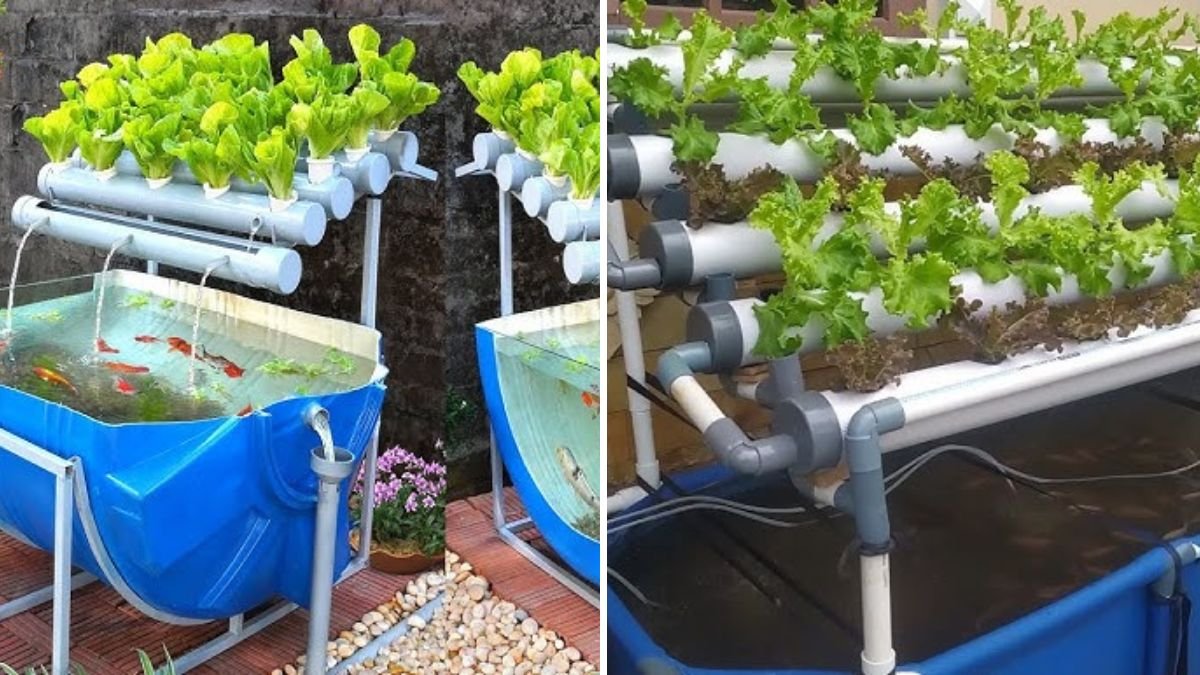Aquaponics combines the best of aquaculture (raising fish) and hydroponics (growing plants without soil) in one sustainable ecosystem. This innovative method allows you to grow fresh vegetables while raising fish, all using minimal resources. The good news is that you don’t need expensive equipment or commercial setups to start—a simple plastic barrel can be transformed into an effective, recyclable aquaponics system. In this guide, we’ll show you how to build your own cheap, eco-friendly aquaponics system at home.
Why Aquaponics is the Future of Sustainable Gardening
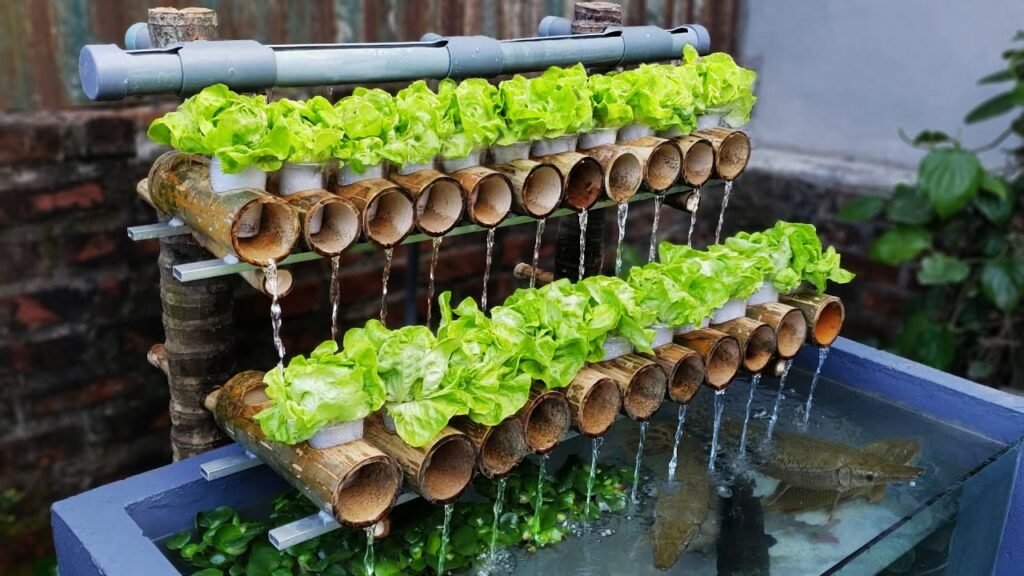
Aquaponics is gaining popularity for several reasons:
- Water Efficiency: Uses up to 90% less water than traditional soil gardening.
- Dual Yield: Provides both vegetables and fish for consumption.
- Space Saving: Perfect for small spaces, rooftops, or backyards.
- No Soil Needed: Eliminates soil-borne diseases and pests.
- Eco-Friendly: Reduces waste and relies on natural nutrient cycling.
By creating a small-scale aquaponics system at home, you can enjoy fresh, pesticide-free produce and protein while contributing to environmental sustainability.
Step 1: Materials Needed
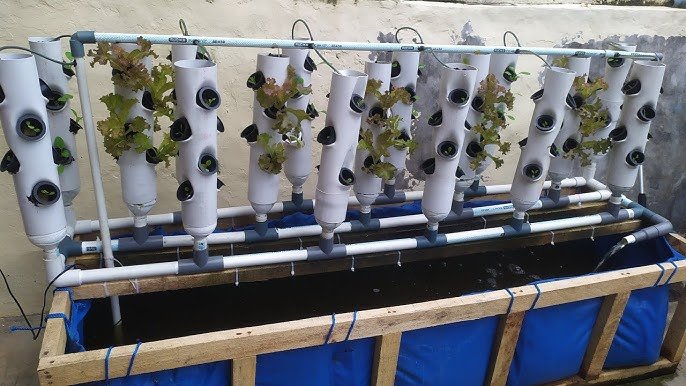
You don’t need a lot of money to start aquaponics. Here’s what you’ll need:
- Plastic Barrel (100–200 liters): Serves as your fish tank and grow bed.
- PVC Pipes or Tubing: For water circulation.
- Submersible Pump: Circulates water from fish tank to grow bed.
- Net Pots or Cups: Holds plants above the water.
- Growing Medium: Options include clay pebbles, coco coir, or gravel.
- Fish: Tilapia, catfish, or ornamental fish like koi.
- Seeds or Seedlings: Lettuce, spinach, herbs, or other leafy vegetables.
- Optional Timer: To automate water circulation for convenience.
Most of these materials are recyclable or reusable, making your system both cheap and eco-friendly.
Step 2: Preparing the Plastic Barrel
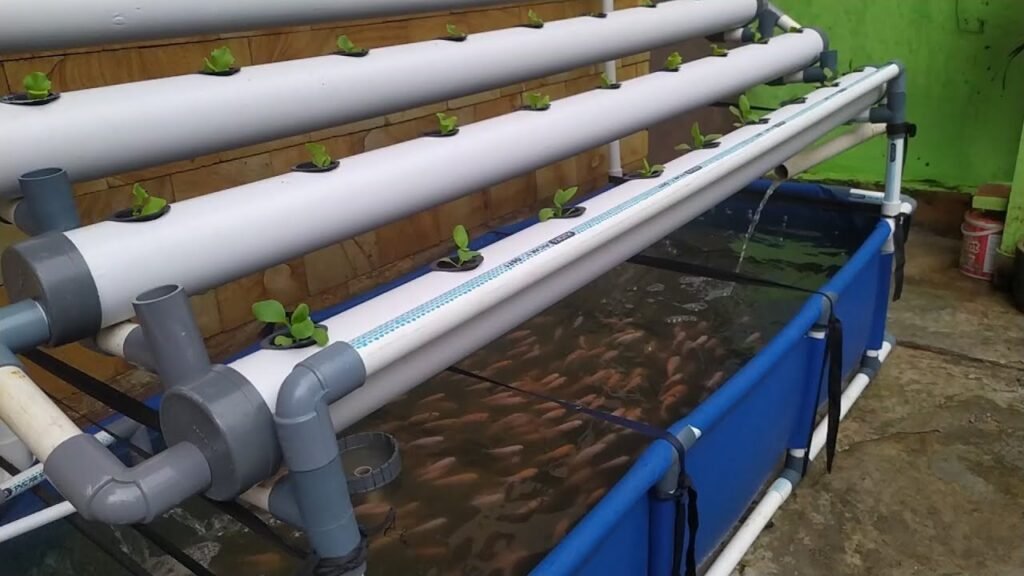
The plastic barrel serves as the heart of your aquaponics system:
- Clean the barrel thoroughly to remove any chemical residues.
- Cut openings at the top for plants and an outlet for water circulation.
- Drill small holes for PVC pipes or tubing to connect the fish tank and grow bed.
- If using two barrels, designate one for fish and one for plants, or create a floating grow bed within a single barrel.
Plastic barrels are durable, lightweight, and inexpensive, making them ideal for small-scale aquaponics setups.
Step 3: Setting Up Water Circulation
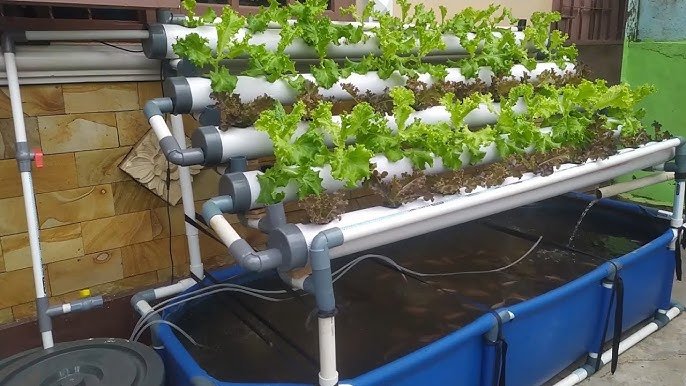
Proper water circulation ensures that both fish and plants thrive:
- Install a Submersible Pump: Place it at the bottom of the fish tank.
- Connect PVC Tubes: Direct water from the fish tank to the grow bed.
- Water Return: Ensure water flows back to the fish tank after passing through the grow bed.
- Optional Timer: Use a timer to automate cycles, especially for intermittent flooding in an ebb-and-flow system.
Good circulation keeps water oxygenated and delivers nutrients from fish waste to plants.
Step 4: Adding the Growing Medium and Plants
Plants in aquaponics absorb nutrients from fish waste. Here’s how to set them up:
- Fill net pots with your growing medium.
- Place seedlings or germinated seeds in the net pots.
- Position net pots above the water so roots can reach nutrient-rich water.
- Ensure spacing to allow adequate light and airflow.
Leafy vegetables like lettuce, spinach, and herbs grow quickly and thrive in this system.
Step 5: Introducing Fish
Fish are the nutrient source for your aquaponics system:
- Choose Hardy Species: Tilapia, goldfish, or catfish are beginner-friendly.
- Acclimate Fish: Slowly introduce them to the barrel water to reduce stress.
- Feeding: Feed fish daily with appropriate feed, which produces nutrient-rich waste for plants.
- Stocking Density: Avoid overstocking; too many fish can reduce water quality.
Healthy fish produce natural fertilizers that feed your plants, creating a self-sustaining cycle.
Step 6: Maintaining Water Quality
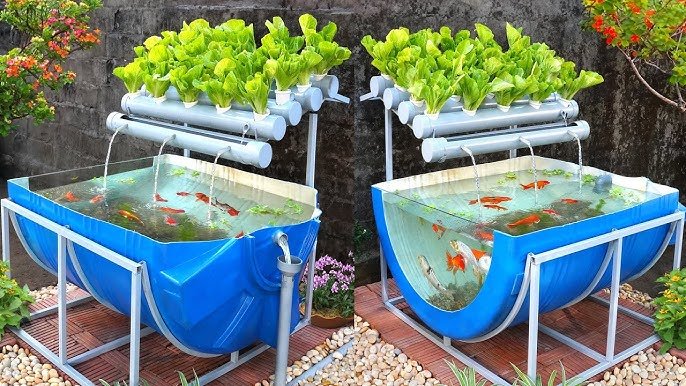
Water quality is crucial for both plants and fish:
- Monitor pH: Ideal pH is 6.8–7.2 for most aquaponics systems.
- Check Ammonia and Nitrites: High levels are toxic; regular water changes may be needed.
- Dissolved Oxygen: Ensure proper aeration with a pump or air stone.
- Temperature Control: Keep water within the preferred range of your fish species.
Consistent monitoring ensures optimal growth for both plants and fish.
Step 7: Harvesting Your Crops
One of the joys of aquaponics is fast-growing, fresh vegetables:
- Leafy Greens: Can be harvested in 4–6 weeks.
- Herbs: Trim regularly to encourage new growth.
- Fish: Depending on species, they can be harvested after reaching the desired size.
Aquaponics allows for continuous harvesting, so your system can keep producing fresh food year-round.
Step 8: Tips for a Successful Plastic Barrel Aquaponics System
- Start small and expand as you gain experience.
- Use recycled or second-hand barrels to reduce costs.
- Choose easy-to-grow plants like lettuce, spinach, and herbs.
- Feed fish consistently and monitor their health.
- Ensure proper light, either natural or with LED grow lights.
- Keep the system clean to prevent algae and diseases.
- Monitor water levels, pH, and oxygen levels regularly.
These tips help ensure that your home aquaponics system is productive, efficient, and sustainable.
Benefits of Using a Plastic Barrel for Aquaponics
- Low Cost: Plastic barrels are affordable and widely available.
- Recyclable: Using barrels promotes environmental sustainability.
- Easy to Maintain: Compact size makes monitoring and maintenance simpler.
- Portable: Can be moved to optimize sunlight or protect from weather.
- Scalable: Multiple barrels can be connected for larger production.
A plastic barrel aquaponics system proves that sustainable, productive gardening doesn’t have to be expensive or complicated.
Conclusion
Creating a cheap and effective aquaponics system at home using a plastic barrel is not only possible but also highly rewarding. By combining plants and fish in a self-sustaining ecosystem, you can enjoy fresh vegetables and protein while saving water, space, and money. From preparing the barrel and setting up water circulation to planting seedlings, introducing fish, and harvesting crops, every step contributes to a sustainable home food system.
Whether you are a beginner gardener, eco-conscious enthusiast, or someone looking to supplement your diet with fresh produce, this recyclable plastic barrel aquaponics system is a fantastic solution. With patience, care, and consistency, your system will provide healthy, fresh, and sustainable food all year round.
